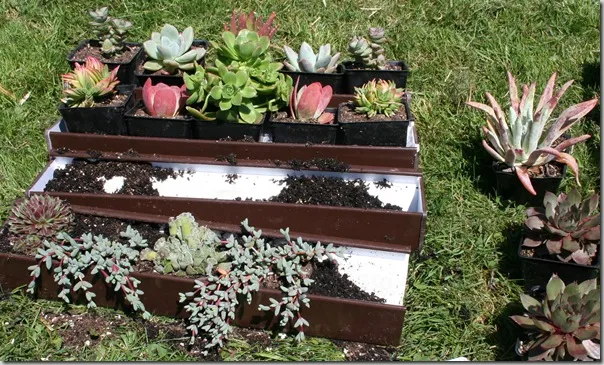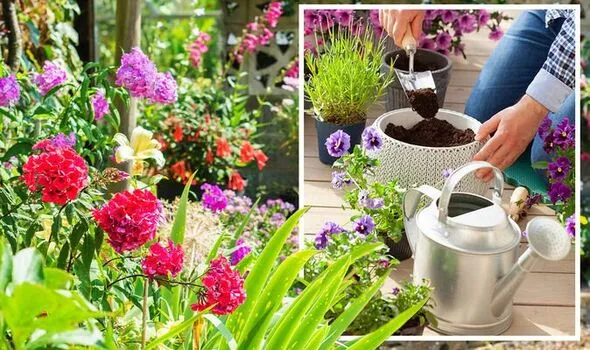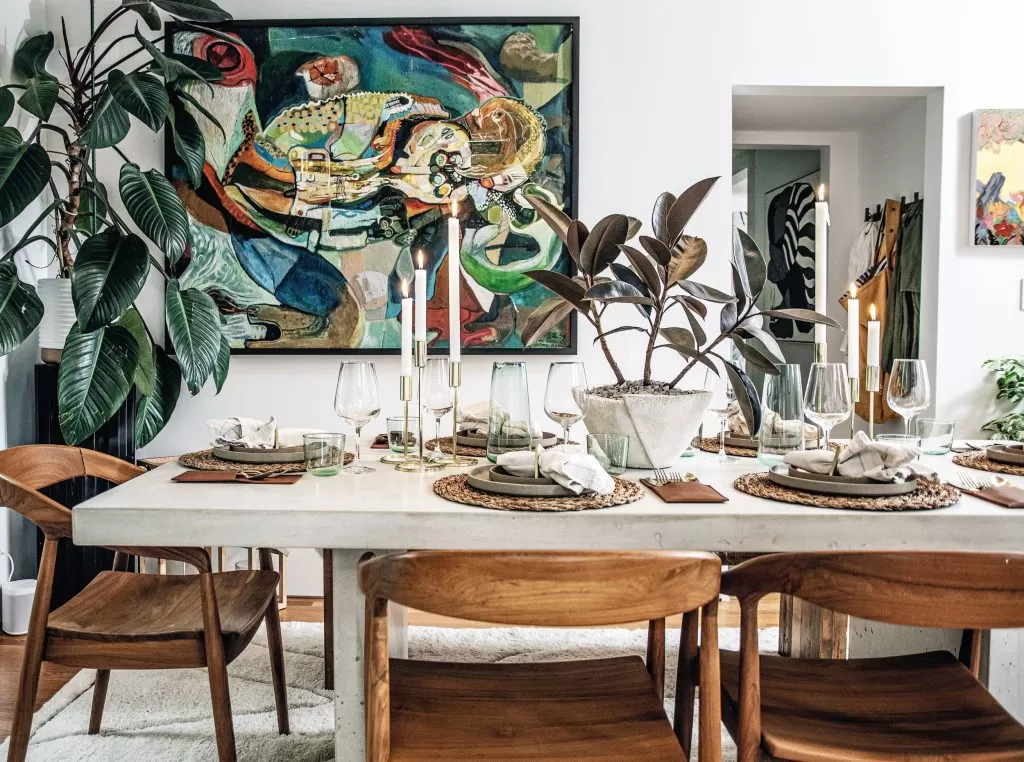- The ultimate low-maintenance duo for busy plant parents.
- Tolerate a range of light conditions, making them versatile decor pieces.
- Require infrequent watering, perfect for travelers or forgetful gardeners.
- Boost confidence for beginners while adding lush greenery to any space.
Ever dreamt of an indoor garden that looks effortlessly chic, thrives on neglect, and makes you feel like a plant whisperer without the constant fuss? If so, meet the dynamic duo of the houseplant world: the Snake Plant and the ZZ Plant. Individually, they are superstars of resilience, but together, creating snake plant & ZZ plant blends in your home decor or care routine offers an unparalleled combination of style and simplicity. These two plants are practically soulmates when it comes to easy care, making them the perfect pairing for anyone looking to green up their space without the high demands of more finicky flora. Let’s dive into why these blends are a match made in houseplant heaven.
Contents
- Meet the Tough-as-Nails Houseplant Heroes
- Snake Plant (Sansevieria)
- ZZ Plant (Zamioculcas zamiifolia)
- Why Snake Plant & ZZ Plant Blends Work
- Complementary Care Needs
- Aesthetic Harmony
- Caring for Your Blend: Tips and Tricks
- Watering Wisdom
- Lighting Nuances
- Feeding Your Foliage
- Cleaning for Shine and Health
- Repotting and Propagation
- Common Challenges (and How to Solve Them)
- Styling Your Space with Snake and ZZ Plants
- Conclusion: Embrace the Easy Green Life
Meet the Tough-as-Nails Houseplant Heroes
Both the Snake Plant and the ZZ Plant have earned their reputations as nearly indestructible houseplants. They are the go-to recommendations for beginners, frequent travelers, or those who simply want beautiful greenery without a demanding schedule. Understanding each plant’s basic needs is key to appreciating why they work so well together.
Snake Plant (Sansevieria)
Often towering with architectural grace, the Snake Plant is iconic for its upright, sword-like leaves. It brings a modern, sculptural element to any room.
- Scientific Name: Sansevieria trifasciata (recently reclassified as Dracaena trifasciata)
- Common Names: Snake Plant, Mother-in-Law’s Tongue, Sansevieria
- Zone: Typically grown indoors; adaptable to many home environments.
- Light: Tolerates low light but thrives in medium to bright indirect light. Avoid direct sun, which can scorch leaves.
- Humidity: Adapts well to average home humidity.
- Water: Drought tolerant. Water thoroughly only when the soil is completely dry, typically every 2-4 weeks depending on light and temperature. Overwatering is the most common cause of death.
ZZ Plant (Zamioculcas zamiifolia)
With its glossy, deep green leaves emerging from thick rhizomes, the ZZ Plant offers a lush, almost waxy appearance. It’s sleek and tropical-looking yet incredibly robust.
- Scientific Name: Zamioculcas zamiifolia
- Common Names: ZZ Plant, Zanzibar Gem, Eternity Plant
- Zone: Typically grown indoors; adaptable to many home environments.
- Light: Tolerates very low light but prefers medium to bright indirect light. Direct sun can burn leaves quickly.
- Humidity: Tolerates low humidity well, despite its tropical origins.
- Water: Extremely drought tolerant due to water-storing rhizomes and stems. Water thoroughly only when the soil is completely dry, often less frequently than the Snake Plant, especially in lower light or cooler conditions (e.g., every 3-4 weeks in winter, every 2-3 weeks in summer).
 Nell Foster in her home looking down at the top of a large ZZ plant in a white plant pot in brightly lit room.
Nell Foster in her home looking down at the top of a large ZZ plant in a white plant pot in brightly lit room.
Why Snake Plant & ZZ Plant Blends Work
The magic of snake plant & ZZ plant blends lies in their shared preferences for care and their complementary aesthetic appeal.
Complementary Care Needs
Both plants hail from arid regions in Africa, giving them a natural tolerance for dry conditions and infrequent watering.
- Watering: This is where they are most alike – they both hate wet feet. Allowing the soil to dry out completely between waterings is crucial for both. This shared need makes managing a collection of these plants incredibly simple. You check the soil dryness, and if it’s dry for one, it’s likely dry for the other, simplifying your watering schedule significantly.
- Light: While both tolerate low light, they truly shine in medium to bright indirect light. Placing them in the same room, perhaps near a window that doesn’t get harsh direct sun, suits both perfectly. They are forgiving if light isn’t ideal, but optimal lighting enhances their growth and appearance.
- Soil: A well-draining potting mix is essential for both to prevent root rot. A standard indoor potting mix amended with perlite or coarse sand works well, or using a cactus and succulent mix ensures excellent drainage.
- Temperature: Average room temperatures (65-80°F / 18-27°C) are ideal for both. Keep them away from drafts, extreme temperature fluctuations, and heating/cooling vents.
- Humidity: Both are remarkably adaptable to the lower humidity levels found in most homes, requiring no special humidity boosting.
Aesthetic Harmony
Visually, the upright, linear form of the Snake Plant provides a striking contrast to the arching, leafy structure of the ZZ Plant. Placing them together in a space adds varied textures and shapes, creating visual interest. You can pair a tall Snake Plant with a shorter, wider ZZ Plant on a plant stand, or group different sizes of both for a lush, multi-layered look. The deep green, often glossy foliage of both plants creates a cohesive, vibrant green palette.
 A large ZZ plant since atop a plant table in a purple plant pot.
A large ZZ plant since atop a plant table in a purple plant pot.
Caring for Your Blend: Tips and Tricks
While they are low-maintenance, providing a little attentive care will help your Snake and ZZ Plants thrive.
Watering Wisdom
Remember the golden rule: less is more. It’s far easier to revive an underwatered plant than to save one from root rot. Stick your finger deep into the soil (about 2 inches) or use a moisture meter. Water only when the soil feels completely dry. In winter, they require even less water as growth slows down.
Lighting Nuances
Observe your plants. If a ZZ Plant becomes leggy with small leaves, it needs more light. If a Snake Plant’s leaves look pale or scorched, it’s getting too much direct sun. Find a spot with bright, indirect light where both can be happy. Rotating pots occasionally helps ensure even growth.
Feeding Your Foliage
Neither plant is a heavy feeder. Fertilizing during the growing season (spring and summer) is sufficient. Use a balanced liquid houseplant fertilizer diluted to half strength every 1-2 months. Avoid fertilizing in fall and winter when growth slows. Over-fertilizing can cause salt buildup and harm the roots.
Cleaning for Shine and Health
Dust can accumulate on the broad leaves of both plants, hindering light absorption. Wipe down the leaves occasionally with a damp cloth. You can even give them a gentle shower periodically to wash away dust and hydrate the leaves slightly (just ensure the soil can drain well afterward).
 A greenhouse is growing two types of ZZ plants, a green ZZ plant and raven ZZ plant.
A greenhouse is growing two types of ZZ plants, a green ZZ plant and raven ZZ plant.
Repotting and Propagation
- Repotting: Both plants prefer being slightly root-bound. Repot only when the roots are circling the pot or emerging from drainage holes, typically every 2-3 years or longer. Go up only one pot size and use a well-draining mix.
- Propagation: Both can be propagated by division, which is the fastest method. ZZ Plants can also be propagated by leaf or stem cuttings (a very slow process!), while Snake Plants are easily propagated by leaf cuttings or by separating pups (offsets) from the main plant.
 A ZZ Plant has been divided into 4 plants. The fleshy roots rhizomes are exposed.
A ZZ Plant has been divided into 4 plants. The fleshy roots rhizomes are exposed.
Common Challenges (and How to Solve Them)
Even the toughest plants can face issues, though with Snake and ZZ Plants, problems are usually linked to incorrect watering.
- Yellow Leaves: For both plants, this is almost always a sign of overwatering and potential root rot. Allow the soil to dry out completely and adjust your watering schedule. Ensure the pot has drainage holes.
- Droopy or Leaning Stems (ZZ Plant): Can indicate overwatering or sometimes too little light causing leggy growth. Assess watering first. If watering is correct, stems might be naturally arching with age; supportive stakes can help if desired.
- Crispy Leaf Tips: Usually a sign of underwatering or low humidity, though these plants are quite tolerant of dry air. Increase watering frequency slightly (if soil is bone dry quickly) or consider occasional misting for the ZZ, although it’s rarely necessary.
- Pests: Both are relatively pest-resistant. Occasionally, mealybugs or spider mites might appear, especially if the plant is stressed. Isolate the affected plant and treat with neem oil or insecticidal soap.
 Close up of a zz plant leaf with sunburn.
Close up of a zz plant leaf with sunburn.
Styling Your Space with Snake and ZZ Plants
Creating snake plant & ZZ plant blends in your home decor is simple and effective.
- Groupings: Arrange pots of varying sizes and types of both plants together on the floor or a large plant stand to create a lush, low-maintenance green corner.
- Contrasting Pots: Play with different pot materials (terra cotta, ceramic, metal) and colors to highlight the plants’ forms and foliage.
- Placement: Utilize their light tolerance. Place a Snake Plant or ZZ Plant in a low-light entryway where other plants might struggle, or let them brighten up a medium-light living room corner. Their upright growth also makes them perfect for tight spaces.
 Large zz plant with glossy green leaves in a square white decorative pot.
Large zz plant with glossy green leaves in a square white decorative pot.
Conclusion: Embrace the Easy Green Life
For anyone seeking to add vibrant, living greenery to their home without signing up for intensive plant care, cultivating snake plant & ZZ plant blends is an absolute game-changer. These aren’t just low-maintenance plants; they are resilient, stylish, and incredibly rewarding. They forgive missed waterings, tolerate less-than-ideal light, and still manage to look stunning, boosting your confidence and bringing life into your space.
Whether you’re a seasoned plant enthusiast or just starting your indoor garden journey, you can’t go wrong with this dynamic duo. Give the Snake Plant and ZZ Plant a try – you might just find your new favorite low-fuss green companions.
What are your experiences with Snake Plants or ZZ Plants? Do you have a favorite blend or pairing? Share your thoughts and photos in the comments below! And be sure to explore more easy-care plant options and gardening tips on Thelittle.garden.







































